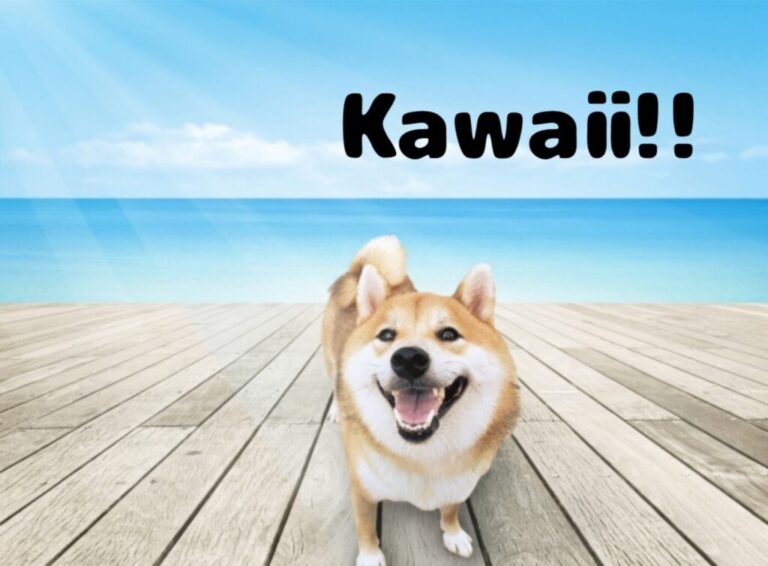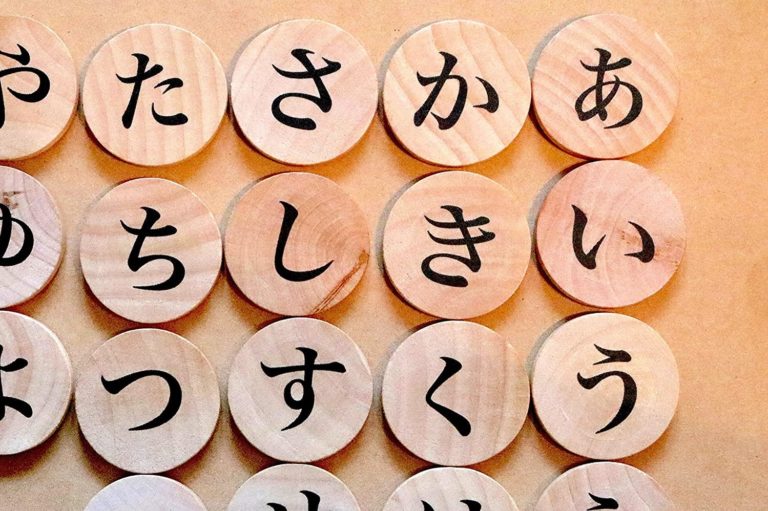Japanese name.
Here we will describe ordinary things.
Online Japanese program includes lessons
This program is designed to be rewarding, exciting and fun. This is a self-study course. We recommend that you study the materials at your own pace. There is a time limit, except for the time limit set to complete each lesson and the entire course.

Click here to learn Japanese language with the best one-on-one Japanese tutoring lessons in person or online.
About language
The headstart program does not try to analyze Japanese grammar. However, you should be aware of some of the important differences between Japanese and English.
- Japanese does not have the words “a”, “an”, and “the”. For example, “building” and “building” are the same in Japanese.
- In Japanese, it is often not possible to distinguish between the singular and the plural. For example, “building” and “building” are the same in Japanese.
- Japanese equivalents of “I”, “I”, “you”, and other pronouns are often excluded from Japanese sentences. To understand what is being discussed, you need to listen carefully in the context.
- You may understand the Japanese subject, but it is not expressed. When the subject of a sentence is expressed, it is almost always the first word of the sentence. In most cases, the verb is the last word in a sentence.
- In Japanese, there is no difference in word order between sentences and questions. If the Japanese want to ask a question, add the word ka at the end of the sentence. The word ka is one of the small Japanese words called “sentence particles” (others include wa, ga, o, te, de, no, ni). In Japanese sentences, it is used to indicate the function of a particular word in the sentence. For example, both wa and ga indicate that the previous word is the subject of the sentence. o indicates that the previous word is the direct object. There is no need to study as it may be omitted in everyday conversation. For this reason, some of the sentences introduced in the lesson omit particles.
- are, kore, sore are synonymous with things. It is far from both the speaker and the listener. This refers to something near the speaker and means “this” or “this”. Pain refers to something near the listener and means “it” or “it”.
The Headstart Program in Japan helps to make your stay in Japan rewarding by providing basic language skills and cultural information. Unlike traditional “textbook Japanese”, this course focuses on practical everyday Japanese, where you need to go shopping, ask for directions, or take the subway.
—
When you are thinking of studying Japanese, you may wonder, “Is Japanese really difficult?” The U.S. Department of State’s Diplomat Training Bureau is a training institution for national diplomats, and Japanese is the most difficult language for native English speakers to learn among Chinese, Korean, and Arabic. is. To choose. So if you’re looking for a standard answer, it’s yes. However, such assessments are based on the number of hours required to learn the script and achieve some fluency without considering the factors that may affect student motivation. Judge the difficulty of the language.
Still, mastering Japanese is not without its hurdles. The following are common reasons why Japanese is often considered the most difficult language:
Chinese characters
Kanji is the kanji used in the Japanese writing system. To be considered fluent, you need to be able to read about 2,000 Kanji characters. Further complicating this feat is that each Chinese character can have multiple readings depending on how it is used (in Chinese, most characters have only one reading).
grammar
Compared to English, Japanese grammar is “reverse”. For example, the sentence “Waiting for a friend” has the same basic syntax in Chinese (“Waiting for a friend”), but in Japanese “Waiting for a friend” I am. ” Will be. The verb is always placed last. Of the sentence. This structure is very unnatural for English speakers and takes time to get used to and use without hesitation.
particle
Japanese people make grammar by using particles a lot. In some respects, they are similar to English prepositions, but much more widely used. For example, the logical structure of the sentence “read a book in the library” is:
[Particle] Library [Particle] I read the book [Particle].
By the way, the grammatical structure of Korean is very similar, so Koreans are relatively easy to learn Japanese.
Honorifics
The heavy use of honorifics in Japanese to respect them and to suggest the underlying power relationship is grammatically and culturally unfamiliar to English speakers. In addition, honorific rules are relatively complex because they are based on the hierarchical position of the interlocutor and the settings in which the conversation takes place.
Multiple writing systems
In Japanese, in addition to Kanji, two different writing systems, hiragana and katakana, are used, each containing 46 syllables. This means that the first learning curve is steep (not to mention understanding it) before pronouncing the first sentence. Especially if you think you can read the Romance languages right away.
So is it all a difficult fight?
Not exactly. There are many areas where Japanese speakers can make life easier for English speakers, some of which are listed below.
English ability in Japan is low
Perhaps the biggest problem is the low average level of English in Japan across all generations. This means that even the slightest progress can directly experience the benefits of motivating you to continue studying. As a counterexample, take someone who is studying Swedish. Swedish grammar and vocabulary may be easier to learn than Japanese. However, the general level of English in Sweden is undoubtedly impressive, especially among the younger generation. This means that years of effort may be required before your Swedish proficiency exceeds someone’s English proficiency on the street. What a depressed idea!
Sex
Nothing. You don’t have to remember masculine and feminine nouns like in Romance languages. Also, you don’t chant “der, die, das, die” in a coffee shop.
Japanese borrows many foreign languages
Katakana is a script used in foreign languages introduced in Japanese. There are many of them, and most of them are taken from English, so you can already get a pretty good start before picking up your pen. The following is an example.
English, Japanese
Camera camera
Hotel hotel
Computer Kyonputa
pronunciation
One of the reasons Japanese speakers find it difficult to pronounce a foreign language is that their native language is only about 100 “sounds”. Yes, it constitutes the entire tongue repertoire of Japanese speakers. Almost all of them are covered in English. In addition, languages are generally flat, so you don’t have to worry about different intonations such as Mandarin and Cantonese.
No need to learn how to write kanji
You don’t have to learn how to write kanji. As long as you can read, you will be absolutely fine. Writing ability is struggling with the widespread use of computers and mobile phones, especially among the younger generation. Today you can tap away
Basic grammatical structure
Now that you have learned how to write Japanese, you can explore the basic grammatical structure of a language. This section focuses on all parts of speech, including nouns, adjectives, verbs, and adverbs. It also describes how to use particles to integrate different parts of speech into a consistent sentence. By the end of this section, you need to understand how the basic statements are organized.
One of the most difficult parts of Japanese is the lack of stative verbs like the English verb “to be”. However, you can declare something by adding the hiragana letter “da” only to noun or adjective verbs. (Learn about na-adjectives in the adjectives section later.)
You can say that you don’t have to use “da” at all or you are a student. For example, the following is an example of a very typical greeting between friends. Also note that no subject is specified, even if it is clear from the context.
One of the most difficult parts of Japanese is the lack of stative verbs like the English verb “to be”. However, you can declare something by adding the hiragana letter “da” only to noun or adjective verbs. (Learn about na-adjectives in the adjectives section later.)
Declare something using “da”
It seems easy. This is a real kicker.
You can propose a state without using “da”!
Even if you don’t use “da” at all, you can say that you are fine or a student. For example, the following is an example of a very typical greeting between friends. Also note that no subject is specified, even if it is clear from the context.
Typical casual greeting
A: How are you?
A: How are you?
B: I’m fine.
B: (I) I’m fine.
Therefore, you may be wondering what it means to use “da”. Now, the main difference is that declarative statements make statements more emphasized and powerful in order to make them more declarative. Therefore, it is common for men to use “da” at the end of sentences.
The declarative “da” is also required for various grammatical structures that require explicit state declarations. It may not be installed. My ass really hurts, but don’t worry yet.
There are three core Japanese scripts: Kanji, Hiragana, and Katakana. In addition, Romaji is used to give Latin phonetics to the symbols of Japanese letters.
Similar to Chinese Pinyin, Romaji is used to apply Latin letters to Japanese letters (ji means letters and roma means romaji). Unfortunately, teachers usually postpone the introduction of hiragana and start by writing a simple sentence like the following in the romaji that is first introduced when they start learning Japanese.
Looking at the romaji, the approximate phonetics is clear. The pronunciation of “r” is actually close to “l”, and the particle “ha” is actually pronounced “wa”. The correct spelling of Romaji is actually Romaji, as elongated vowels are represented by overlined bars (eg ō) or twisted accents (eg ô).
Hiragana
Hiragana is used to form grammar. The particles and conjugations of the verb are written in hiragana and can be thought of as the main “alphabet” of the language. Technically speaking, hiragana should be called syllabaries. This is because each letter represents a defined syllable and its pronunciation does not change regardless of the order or position of the sentence. This is different from English, for example, where the pronunciation of “s” is different for “sun” and “shine”. There are 46 basic syllables.
Originally developed from some of the kanji, katakana is now used to write words borrowed from other languages. Cakes, meetings, businesses, hot dogs, computers and more. Often these words exist in Japanese, but it is not uncommon for Japanese speakers to intentionally use English words (with Japanese pronunciation). These foreign languages may be pushed, pulled, and omitted until they become unrecognizable due to their own migration within Japanese.
Each hiragana syllable has a one-to-one relationship with katakana and vice versa. Hiragana and katakana are two different ways to write the same syllable. In English, you can think of it as uppercase and lowercase. “APPLE” and “apple” look like completely different words to aliens, but to us they have exactly the same meaning and pronunciation.
Chinese characters
Last but not least, kanji is basically kanji. Well, originally at least. They came to Japan from China about 2000 years ago, and since then many have been changed to Japanese-specific (modified form of the original characters).
You can see that not all characters have changed. Many of the more basic characters (such as Ming) remain the same. Other characters are different in all three scripts (eg departure). Thinking of Chinese as a hometown between the difficulties of Traditional Chinese and Simplified Chinese is not far from the truth.
Kanji is classified as a radical. These are the characters that appear within the characters (sometimes kanji). Not all are used in modern Japanese, but there are a total of 214 radicals.
Each head has its own general meaning, and it is often possible to understand the meaning of the kanji in which it is used.
Basic meaning of kanji English
Time time day day, time
Poetry words, say
Also, each kanji has only one radical, so you can search for unfamiliar kanji. Sure, there are plenty of online resources and apps that can draw characters on the screen these days, but if you’re using a good old paper dictionary, knowing the radical is the easiest way to find Chinese characters. is.
How many kanji do you have? To achieve Level 1 of Kanji, which is specially designed to test your Kanji proficiency, you need to be able to read and write about 6,000. This is a feat that most native Japanese speakers cannot reach, and speakers who pass Level 1 will study for months, if not years.
To read newspapers, magazines, books, etc., you need to know about 2,000 kanji. Currently, there are 2,136 general kanji characters. In addition, about 2,000 characters are required to pass Level N1 of the Japanese Language Proficiency Test (JLPT), which is the main test for foreign learners of Japanese.
It’s a good estimate to be able to “pass” about 1,000. 1,006 Kanji is the number that Japanese school children need to know before graduating.
Related article:
HH JapaNeeds
Your tutor. Your time. Your location.
https://hh-japaneeds.com/










